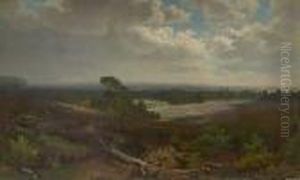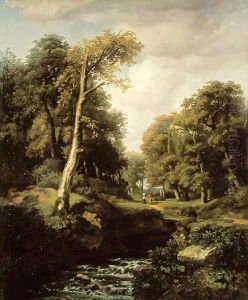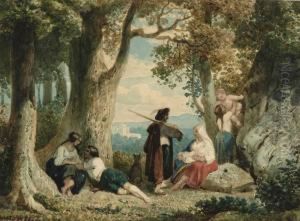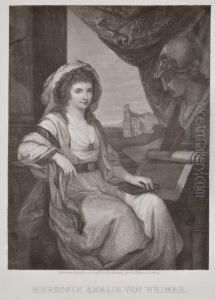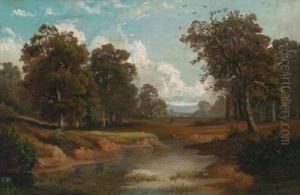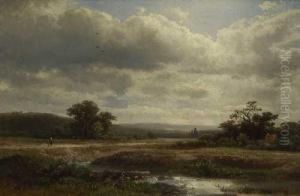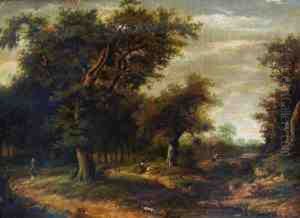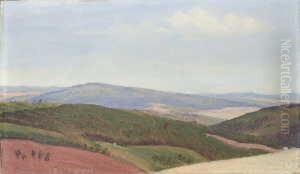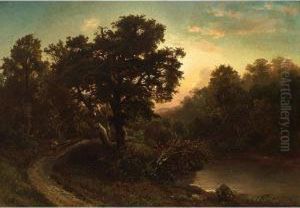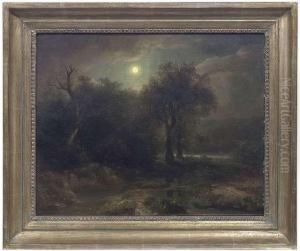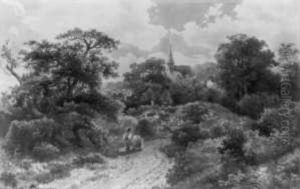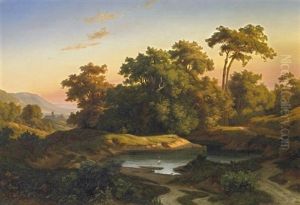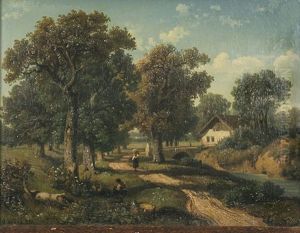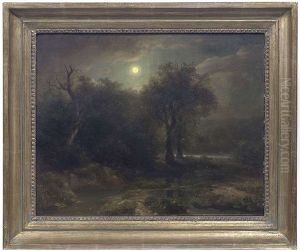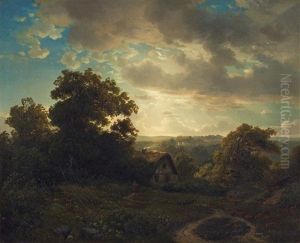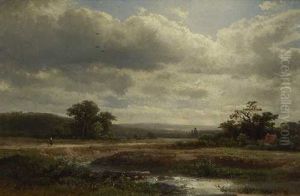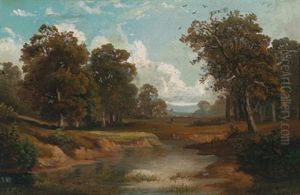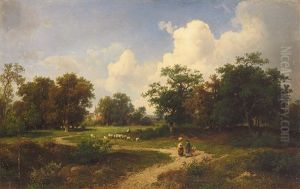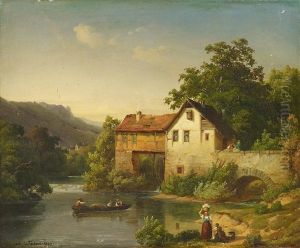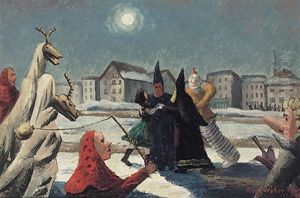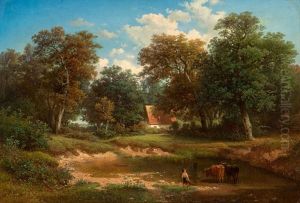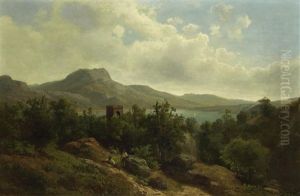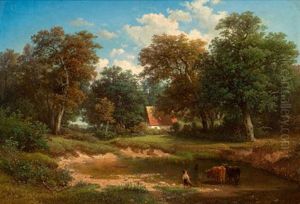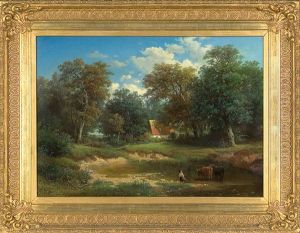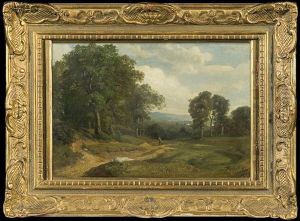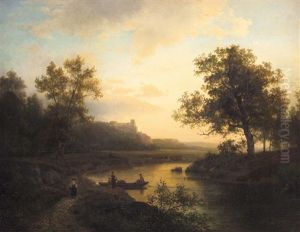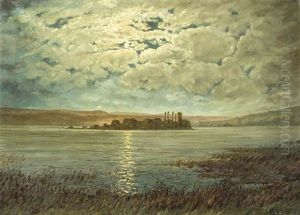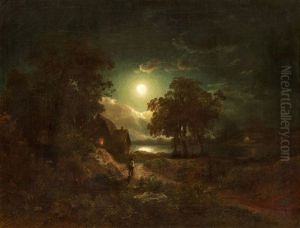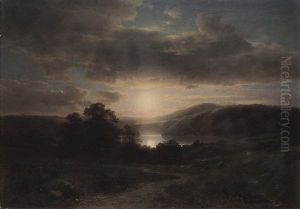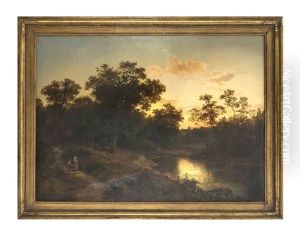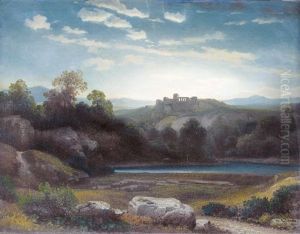August Weber Paintings
August Weber was a German painter, primarily known for his landscape paintings, born in 1817 in Frankfurt am Main, Germany. He is often associated with the mid-19th century German Romantic movement, which emphasized nature and emotional expression in art. Weber's works are characterized by their detailed and atmospheric portrayal of natural landscapes, often capturing the serene and sublime aspects of the natural world.
Weber received his formal art education at the Städelsches Kunstinstitut in Frankfurt, where he was influenced by the works of the older Romantic painters. He was particularly inspired by the landscapes of Caspar David Friedrich, although Weber developed his own distinct style, focusing on the interplay of light and shadow and the meticulous depiction of nature.
Throughout his career, Weber traveled extensively across Germany and other parts of Europe, including the Alps and Italy. These travels significantly influenced his work, as he sought to capture the diverse beauty of European landscapes. His paintings often feature forests, rivers, and mountain scenes, imbued with a sense of tranquility and awe.
Despite his talent and contribution to the Romantic movement, August Weber was not as widely recognized as some of his contemporaries during his lifetime. However, his work has gained appreciation posthumously, with art historians and collectors valuing his unique approach to landscape painting.
Weber's legacy includes a significant body of work that continues to be studied and admired for its beauty and technical skill. He passed away in 1873 in Frankfurt, leaving behind a rich portfolio of landscape paintings that continue to captivate audiences with their detailed representation and emotional depth.
